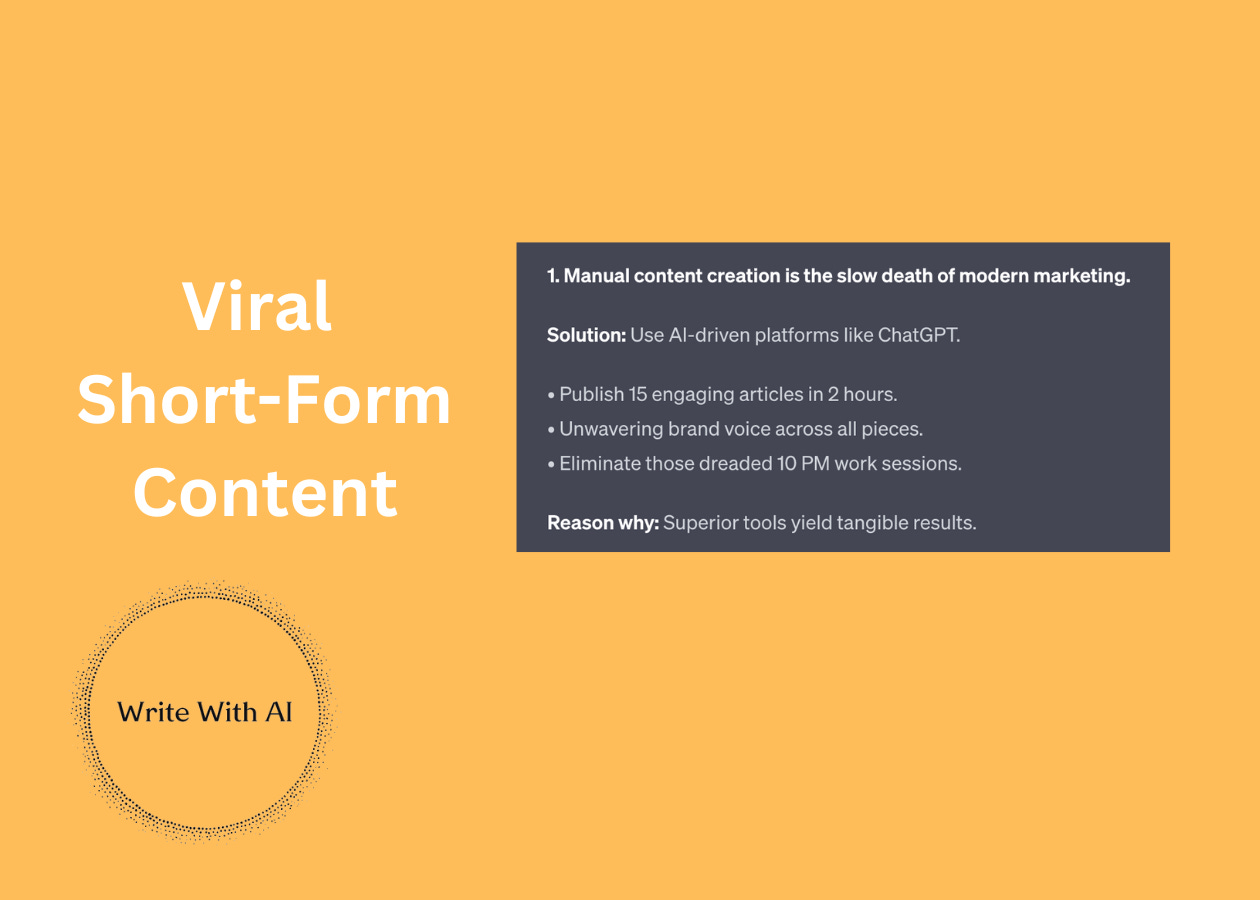On August 17th, Nicolas Cole is teaming up with one of the most prolific storytelling writers on Twitter, Nathan Baugh, to co-host a masterclass on Storytelling with AI.
It’s called 90-Minute Novel. Grab your seat here!
Ahoy, Digital Writers!
Ever felt like ChatGPT was supposed to help, but your AI-generated content just falls flat?
Yeah, me too!!
AI is powerful, but it doesn't "get" virality or human engagement like we do (yet). **But after spending what feels like a 1,000 hours training ChatGPT to write content that doesn’t suck, I’ve finally figured it out.
And today, I want to share my 7-step framework for writing short-form internet hits with AI.
Let’s dive in!
First, Why Does Most ChatGPT Content Suck?
ChatGPT is a super-efficient intern. It's eager, quick, and follows instructions. But if you don't guide it properly, you end up with generic, forgettable writing.
It's not just about what you ask, but how you ask.
Ready?
Easy!
100%, the internet will go bananas! (Kidding of course)
People who say ChatGPT "creates mediocre content" are giving it mediocre prompts. And as much as it is “AI cliché,” it’s true—what and how you ask ChatGPT (input) determines the quality of what ChatGPT gives you in return (output).
Let’s dig into the framework.
7 Steps To Writing Short-Form Internet Hits With ChatGPT
This framework follows the 10-80-10 rule for writing with AI.
You do the first 10% of the work of coming up with the idea
ChatGPT does the middle 80% of the execution
You do the last 10% of edits to polish it off before publishing
And instead of using a MEGA-prompt, I chained together several smaller prompts.
With the shorter prompts, I, as the “AI orchestrator,” can iterate on what ChatGPT returns. Through a series of quick feedback loops, each prompt guides my Digital Intern in the direction I ultimately want.
However, before I prompt ChatGPT with anything, I start where all Digital Writer’s should start:
With the READER!
Step 1: Clarify What Your Reader Wants
Jump in your reader’s shoes for a minute.
What do they really want
What keeps them up at night?
What do they daydream about during boring Zoom meetings?
Start with a goal you know you reader wants to accomplish.
When you do, you open the door to a resonant connection. For example, if you write for fitness enthusiasts, what are they daydreaming about? Are they looking for the perfect summer body? 13% body fat? Adding more fruits and veggies into each meal? Once you name the specific “thing” the reader wants, you’ll have their attention and go from a a writer who "guesses" to one who truly "understands" their readers.
Pick a goal you can focus on and let’s move to the next step!
Step 2: Paint The “Villain” In Your Reader’s Story
Problems are like a villain—coming to steal your reader’s hopes and dreams.
Nobody loves the bad guy, because people don’t like pain! And when you poke the bear in a sore spot, by pointing out an obstacle, you get attention. “Oh, you want that perfect summer beach body so you can impress your friends at the beach after being made fun of all last year for your beer belly? If you let that happen again, you’ll be the butt of your friends jokes at every poker night for the rest of your life! Yuk!”
Feel the difference?
To do this, we are going to use ChatGPT to find a “villain.”
Keep reading with a 7-day free trial
Subscribe to Write With AI to keep reading this post and get 7 days of free access to the full post archives.







